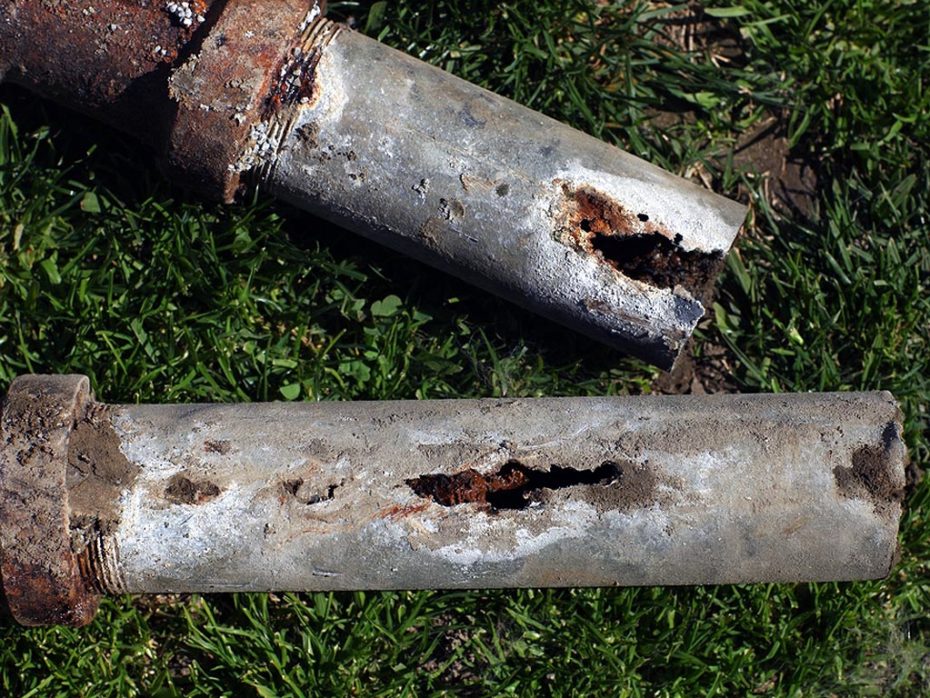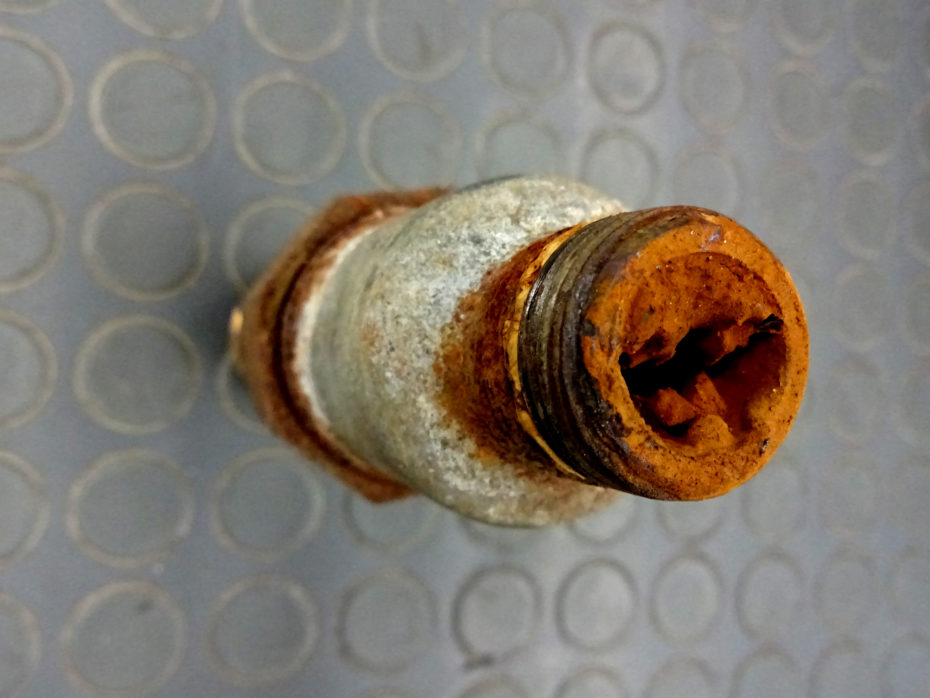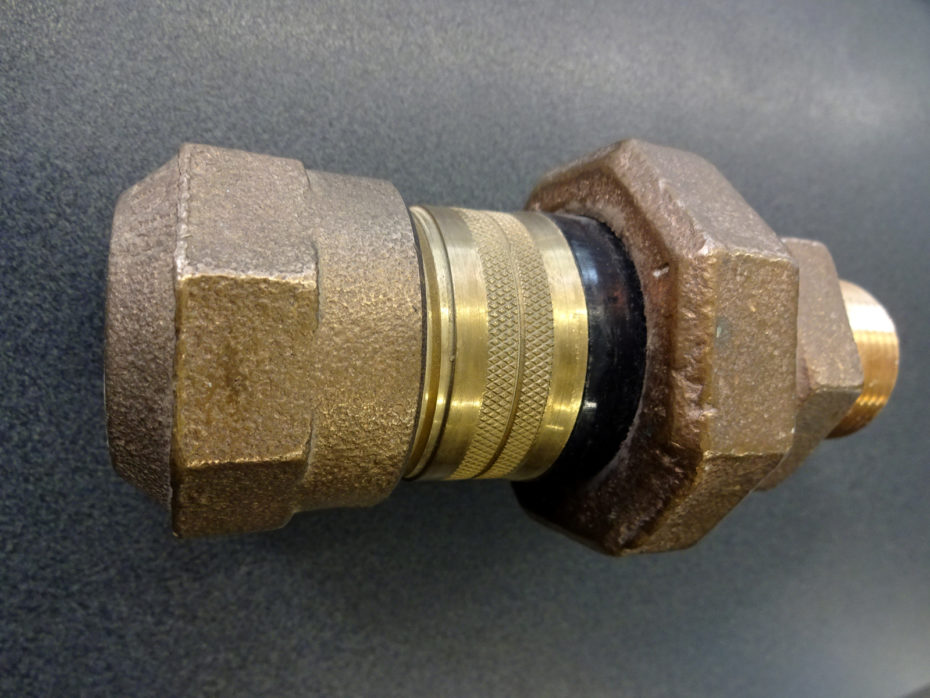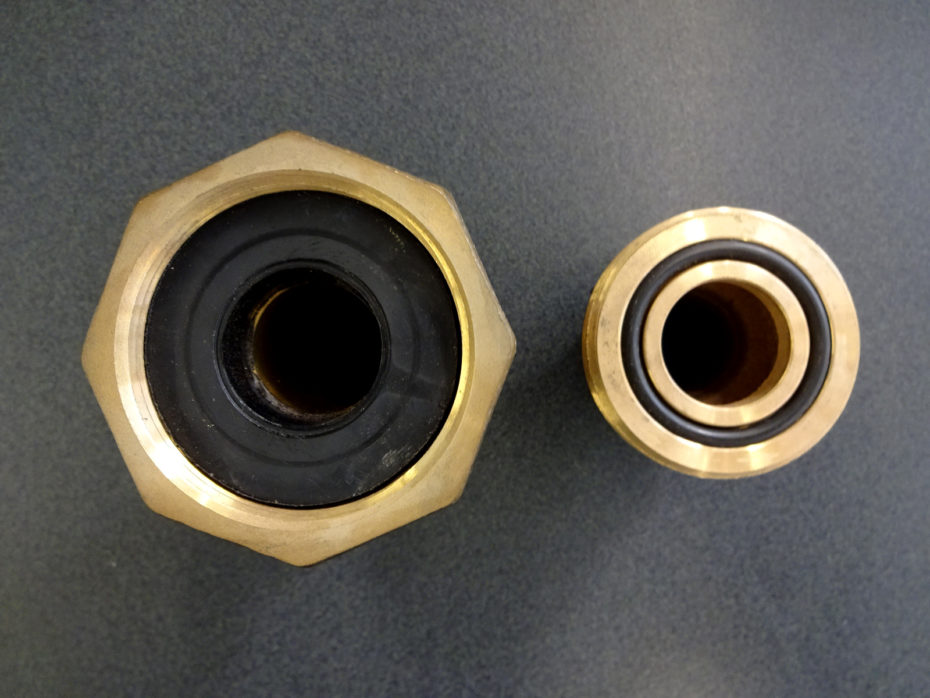How To Repair Galvanic Corrosion
Reverse to popular conventionalities, quondam age is not responsible for many pipe failures. Instead, a failure to prevent and control corrosion is at mistake. Galvanic corrosion is one of the virtually common types of corrosion. H2o mains in particular endure from this problem. We often hear from homeowners request what is galvanic corrosion, what are the primary causes of galvanic corrosion and how practice we prevent galvanic corrosion in our pipes?

What is galvanic corrosion?
So what exactly is galvanic corrosion and how does it effect my pipes and metal in general?
"For a galvanic cell to form, two electrochemically different metals must exist within a localized electrolytic surroundings."
What does that hateful for your home? Well, if you have the proper conditions, galvanic corrosion tin can accept devastating effects on your pipes. This problem occurs when two different metals both share an surround that contains an electrolyte. These examples demonstrate just how massive this problem tin can go.
Merely similar the electrolytes in a sports drink help fluids move throughout our bodies, the electrolytes in the pipe's surroundings allow ions to move from ane metal to some other. This ways that ane of those metals is going to go stronger – at the expense of the other.
This insidious damage is not necessarily visible, either. As corrosion engineer Jim Lary explains:
"Older cast iron pipe consists of flakes of graphite (carbon) in an fe matrix. When the metal corrodes, it loses the fe elective, leaving backside the graphite. Pipe that has turned to graphite often retains the appearance of audio pipe, leading casual observers to mistakenly believe the pipage has remained corrosion-free…"
Pipes that expect fine on the exterior, may not be fine of the inside. That is why y'all demand an experienced plumber to audit your home's pipes if yous suspect a trouble! Fortunately, our plumbers at Balkan have the experience to recognize galvanic corrosion, and they also know how to right it.

Within of a galvanized fitting
The primary causes of galvanic corrosion
In that location are three main causes of galvanic corrosion; directly current being transferred onto to a water service line from the secondary electrical basis. Dissimilar metals being connected to each other, such as galvanized pipe and copper tubing. Lastly, stray electrical current running underground from damaged or lacking underground utilities. Each of these causes have particular factors and must be mitigated individually.
Iii ways to forestall galvanic corrosion
For each of the above three causes of galvanic corrosion, there are corresponding solutions and preventive measures that can be taken. What follows are iii recognized means to prevent piping damage from galvanic action, or electrolysis:
1. Grounding rods instead of grounding to a water line
The purpose of a secondary electrical ground is to protect household electric appliances and systems from thunder strikes, adventitious contact with higher voltage systems, or the failure of the primary ground that is connected to the electrical panel. Just electrical grounds continued to your water service line are also the cause of galvanic corrosion in many cases.
A viable option to prevent galvanic corrosion, and electrolysis on your h2o service line, is to replace the ground wire connectedness to your water line. More frequently household electric systems are using grounding rods in lieu of grounding to the h2o service line. As a matter of fact the National Electrical Code (NEC) at present recommends supplementing grounding to the cold water service line with a grounding rod. Information technology is highly recommended that the installation of a grounding rod be done by licensed electrician.

Grounding rod for electrical service
Typically 8' of the grounding rod must extend into the ground. The materials used for a grounding rod tin vary. Copper coated rods are commonly used, as copper prevents corrosion from being in contact with the ground. But galvanized rods may exist a better selection. It is suggested a licensed electrician perform the installation. A sending pit may have to exist dug to ease installation, and aid foreclose injury during the installation. In many cases it is very difficult to install an 8′ grounding rod from atop a basement floor.
Modern solid state appliances can send direct current through the electrical ground, and through the cold water service line. Straight current can destroy copper water lines in less than 2 years. Grounding rods have been in utilise since the advent of electricity, and Benjamin Franklin's fourth dimension, then they accept forth history of successful use. Grounding rods have a full general life expectancy of 15 years.
ii. Dielectric couplings prevent galvanic corrosion

Brass dielectric plumbing fixtures
Dissimilar metals deport electricity at different rates. The connecting points of ii different pipe materials becomes rotted by galvanic corrosion in a relatively curt period of fourth dimension. A prime example of this is when galvanized piping is connected to copper or brass. Ideally the old galvanized pipe should be replaced. But the expense, or sensitive area of the piping, may brand pipe replacement undesirable. In those cases a dielectric coupling tin can be used.
A dielectric coupling is easily installed betwixt the ii dissimilar metals. Different other plumbing fittings, it has a rubber ring gasket that stops the menstruum of electricity between the two metals. it is advised to cheque your local plumbing code to ensure such fittings are legal. Dielectric couplings are not especially expensive.

inside of a dielectric coupling
3. Wrapping water lines in plastic prevents galvanic corrosion
Blank copper or contumely water lines are great conductors of electricity. Therefore they are prone to electrolysis and galvanic corrosion. Similar to electric wires being coated with prophylactic or plastic, water lines can be protected in the aforementioned way. If hole-and-corner water lines are installed inside plastic or condom tubing, devious electric current cannot reach them. If left unprotected, underground copper or brass lines can be rotted out past galvanic corrosion in two years or less. H2o main contractors typically use to cover copper water lines are PVC, or plastic irrigation tubing.
Contact Joseph 50. Balkan, Inc. for all of your plumbing needs or to take advantage of our gratis, no obligation inspections.
Source: https://www.balkanplumbing.com/galvanic-corrosion-pipes-plumbing-copper/
Posted by: baisdenbefer1961.blogspot.com


0 Response to "How To Repair Galvanic Corrosion"
Post a Comment